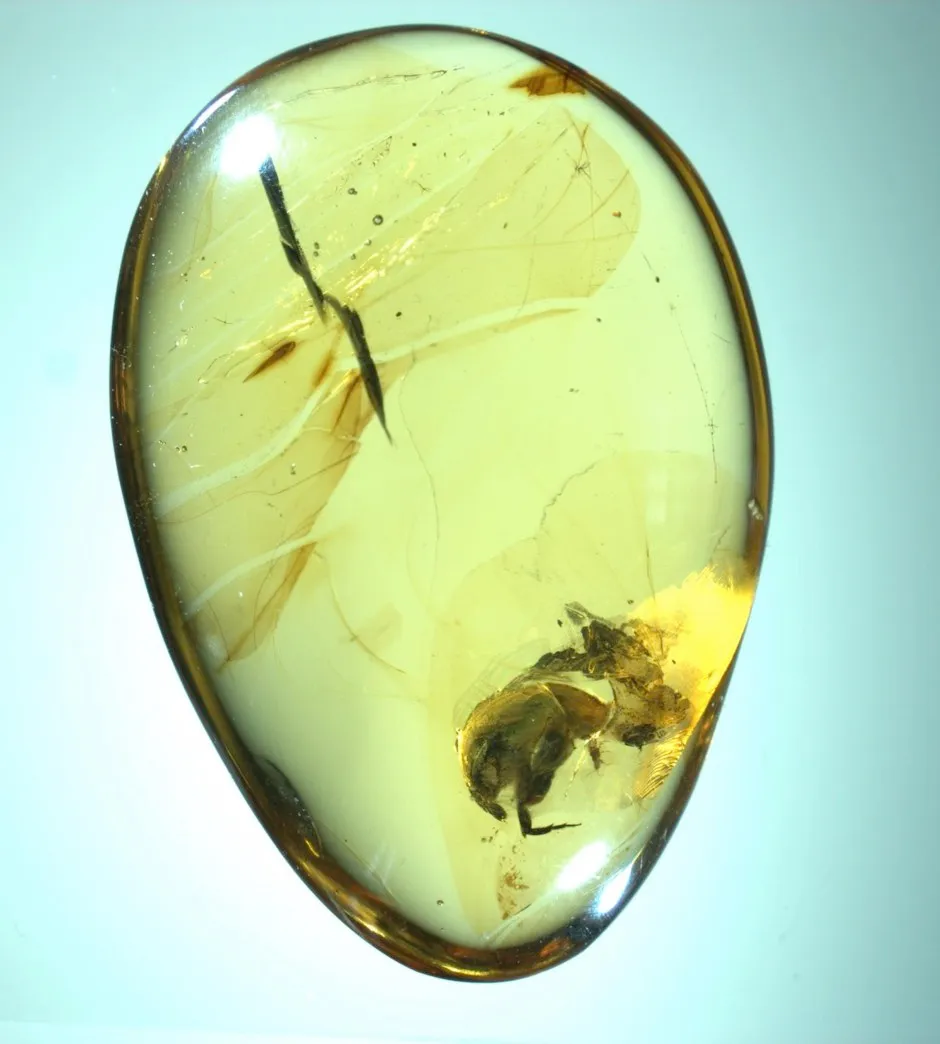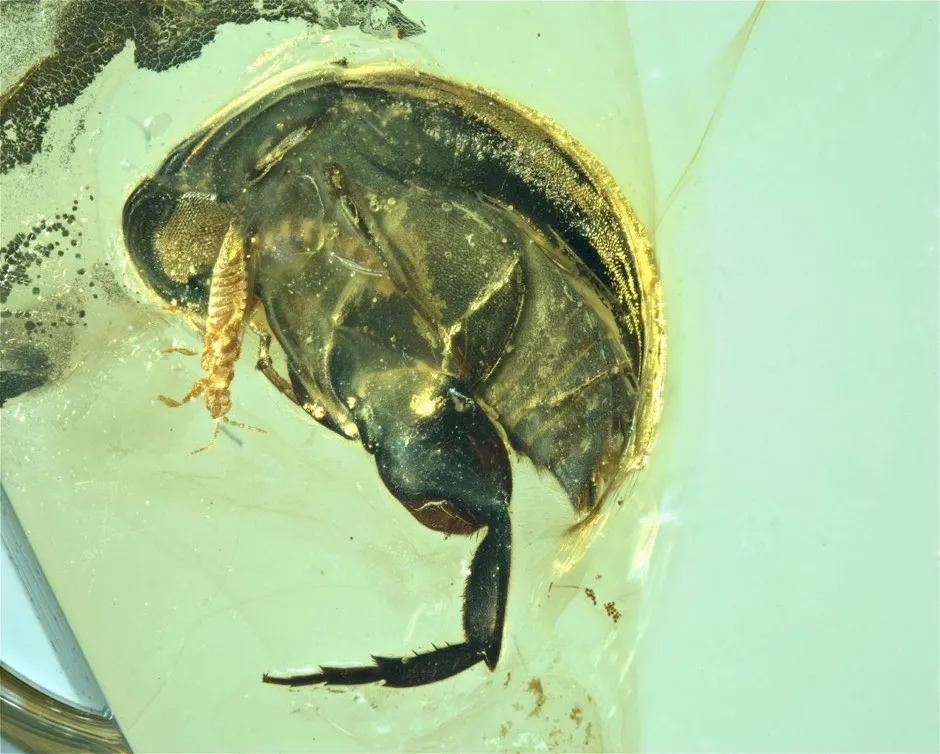New research by scientists from the USA and China has pushed back the earliest evidence of insect pollination to 99 million years ago, when pterosaurs still soared in the skies.
Since the time of Charles Darwin, it has been thought that insect pollination played a huge role in the explosion of flowering plant diversity that took place during the Cretaceous period (145-66 million years ago).

But while flowering plants and insects were both present at that time, there was little fossil evidence to back up the claims that insect pollination was happening.
In this new study, the researchers identified a species of tumbling flower beetle (Angimordella burmitina) trapped in a piece of 99-million-year-old amber, which was found deep inside a Myanmar mine. They established that it was a pollinator by studying structures such as its mouthparts and body shape.
Read more about insects:
- Relative to body size, Saharan silver ants sprint 20x faster than Usain Bolt
- What’s the best way to get wasps to go away?
Then, by using a confocal laser microscope, they discovered that there were grains of pollen hidden within tiny hairs on the beetle’s body, suggesting that it had been visiting plants. They also studied pollen preserved in the amber, and found that its shape and size suggested it had evolved to be spread via insects.
“It’s exceedingly rare to find a specimen where both the insect and the pollen are preserved in a single fossil," said David Dilcher, who co-authored the research.

“Aside from the significance as earliest known direct evidence of insect pollination of flowering plants, this specimen perfectly illustrates the cooperative evolution of plants and animals during this time period, during which a true exposition of flowering plants occurred.”
Before this study, the earliest direct evidence of insects pollinating flowering plants came from around 49 million years ago, during the Palaeogene period.
Today, around 80 per cent of the UK’s wildflowers rely on insects for pollination, while a large proportion of our food crops also need the help of our buzzing allies. The relationship between pollinating insects and flowering plants is often seen as one of the wonders of evolution, as each requires the other to thrive.
